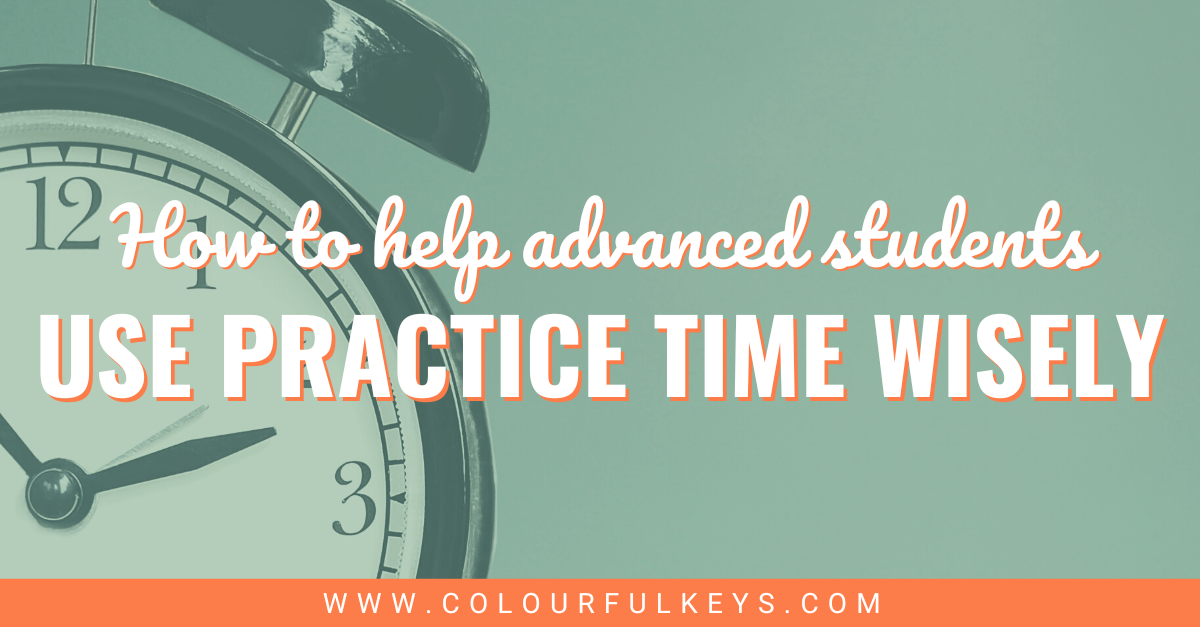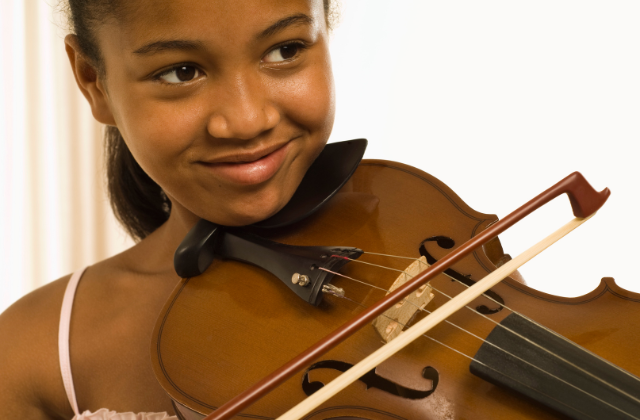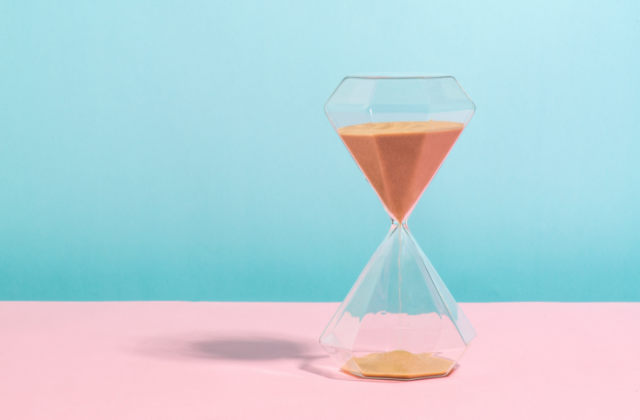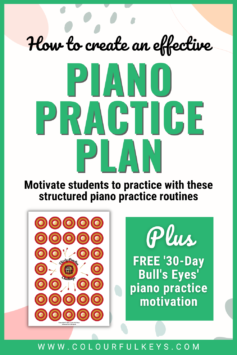
This article about planning practice time for advanced music students was written by Jason Heath. Jason – the founder of DoubleBassHQ.com – is an active performer, writer, blogger and teacher. He’s widely known for his podcast Contrabass Conversations, devoted to exploring music and ideas associated with the double bass. His podcast and blog are highly regarded in the music world, and he truly is the voice of the double bass world with hundreds of podcast episodes interviewing some incredible bassists. He is also the author of two publications including the guide, ‘Winning the Audition’.
Are you tired of your advanced music students wasting precious practice minutes figuring out what to work on? To be effective at this level, practice needs to be planned. But how can we teach students to do this efficiently?

I can’t tell you how many of my busy advanced students have only a few minutes to practise daily, yet squander them trying to figure out what they actually need to work on. What really needs work?
If they only have an hour, should students practise scales and technical exercises? What about the concert this weekend? Surely that needs the most work…
After years of missteps, I discovered the crucial importance of helping students separate practice planning from actual practice sessions. This has been transformative in ensuring my advanced students keep their skills sharp while balancing short-, medium- and long-term goals.
The Practice-Planning Trap
For years, I’d sit down with students at the end of a lesson and come up with a plan. Inevitably, the planning would take forever. And yet, students would hardly make progress during the week. So what was going wrong?
I found students would follow the plan but wouldn’t practise effectively. Or, worse yet, they would get caught up in the details of the plan or feel overwhelmed and just not get started at all.
Perfectionism = Paralysis
I’m notorious for going overboard in planning out practice, both for myself and my students. I find myself planning things out meticulously, down to the minute and the precise number of repetitions I want to achieve.
Why does such a detailed plan make so many students feel stuck?
I’ve learnt that there’s a “sweet spot” between having no plan at all and having hyper-rigid practice goals.
Having a very detailed plan can make practice boring, inefficient and unnecessary. If, for example, you master a 2-octave E-flat major scale in your practice but your detailed plan states that you must play it another 12 times, you’d be wasting time that could be spent elsewhere.
I now help my advanced music students to craft a practice plan that can be expanded or contracted easily, depending on the amount of time they have and how much they achieve in a practice session.

Subscribe to updates and get the 30 Practice Bull’s Eyes Challenge
Enter your details to subscribe to the newsletter for piano teachers with information, tips and offers.
I hate spam as much as you do! I’ll only send you information that’s directly relevant to music teachers and you can unsubscribe at any time.
Vibrant Music Teaching members can access the Practice Bullseyes Challenge right away from the Printable Library. If you’re not a member, you are missing out on so much pre-planned content and professional development! Check out the VMT membership at www.vibrantmusicteaching.com.
Use a Practice App
About five years ago, I started encouraging students to use music practice apps and it totally transformed my students’ practice habits.
I love using the practice app Modacity, but there are several out there on the market and I encourage you to find an app that works for you and your studio.
Most practice apps organise practice items into practice lists, much like playlists in Spotify or Apple Music. It’s easy to add and arrange practice items in any order you like. When you’re done with one item, the app immediately moves to the next item on the list.
Each practice item has a timer to show students how long they’ve been practising that particular thing, an audio recording button and other useful tools like a metronome and drone.
I like having all practice tools in one app, and my students have been using their practice app for so long they associate that purple app background with being productive! 😃
In this video, watch how Nicola uses another practice app, Vivid Practice, with her students.
Adjust and Stay Flexible
In an ideal world, your advanced music students would plan their practice weekly, record themselves extensively, listen back critically and take notes, ready to be discussed in the next lesson. (Wouldn’t that be wonderful?!)
Most students’ actual world is a far cry from that fantasy, however.
These days, students have a lot of responsibilities including after-school activities, extra studies and sports games. And while practising their instrument is on their list, unfortunately, it’s often the fourth or fifth priority for the day (or even lower).
How then, as teachers, can we maximise their practice time to ensure our students “keep the blade sharp” in terms of their technical skills, hit their marks on current performances or exams and make progress on long-term goals?
My Student Only Has…
If your student is an advanced musician, it is likely that they are practising consistently and regularly. In an ideal world, most students would dedicate a substantial amount of time to practise every day, but we all know that life just doesn’t work like that!

Here’s an example of how I create flexible practice plans for my advanced music students to scale up or down based on how much time they have to spend with their instrument.
…20 Minutes (or less!) to Practise
Encourage these students to make time for at least a few minutes daily to put their hands on their instrument.
My rule is to practise every day, even if they only have five minutes. Your students don’t want to ‘break the chain’ and miss a day. Even if they just have a few minutes, they can at least play some long tones and a simple scale.
Vibrant Music Teaching members should check out the “Take 5” resource in the printable library. It’s a fun way to help piano students structure their practice time if they only have 5 minutes to spare.
If it helps, you could print out a simple calendar and ask them to cross off when they practise – no matter how long or short – as a great visual reminder.
Practise This
Encourage these students to focus on technique. Using a bass student as an example, give them a routine of open strings, simple scales and arpeggios, bowing variations, dexterity exercises and etudes.
They can scale this work up or down depending on the amount of time they have. At a minimum, they should be able to touch upon all those technical items in 20 minutes.
Practising these skills is the musical equivalent of your students brushing their teeth. They don’t want to skip days of brushing their teeth, and the same is true for their musical technique routine. 😁
…45 Minutes to Practise
This is my minimum effective dose of practice. While I’d like students to do more than an hour a day of practise, they can still do their technical routine and also get into their current repertoire with a 45-minute session.
These advanced students may even be able to play a few lines from an upcoming performance or exam piece, though it’s unlikely that they’re going to get much done in terms of long-term goals with a 45-minute session.
Practise This
Encourage students to record themselves doing at least one thing. It can be something simple like an etude, or perhaps a passage from an upcoming performance.
Having advanced students record themselves and listen back is critical for their long-term development. The recordings allow them to separate out their performance from self-evaluation, which is super helpful for mitigating stage fright.
…60 – 90 Minutes to Practise
These practice days make me a happy teacher. They don’t happen as often as I like, but if an advanced music student has had 1 – 2 long sessions in their weekly practice, they’ve probably had an effective and engaged session.

Remind students that a 60-minute practice session counts even if they break it up throughout the day.
Practise This
For these types of sessions, I encourage students to spend about 45 minutes on technique then take a short break before diving into repertoire.
In addition to getting students to record themselves in these longer sessions, I try to encourage students to practise at least one passage and dive deep with deliberate practice.
Some examples of deep practice include:
- Deconstructing the rhythms of a passage
- Experimenting and playing with different expressions and articulations
- Improvising with rhythms, scales and structures that are in their current piece
In an ideal world, your students would be practising every single thing with this kind of focus.
Ask students to try to do some listening during these longer sessions. Listening is a great way to break up really long sessions.
Quit While They’re Ahead
It’s important to teach students to know when to stop working on a particular passage for the day. After all, learning doesn’t come to a standstill as soon as they put down their instrument.
Students may often find themselves making connections from their practice session during the middle of the night or a solution to yesterday’s problem popping into their head while brushing their teeth the next morning.
I believe that there are a lot of parallels between strength training at the gym and musical practice: A lot of the gains from practice sessions come during the recovery phase. This is when muscles get stronger and the brain adjusts to the work that has been done.

What would you consider essential during your advanced music students’ practice time?
For me, having no plan is a bad thing…but having an overly-rigid plan can be just as bad. I’d love to hear your thoughts in the comments below.
Nicola has an entire centralised page devoted to teaching students to practise effectively and efficiently. Check back often for the latest and greatest resources!